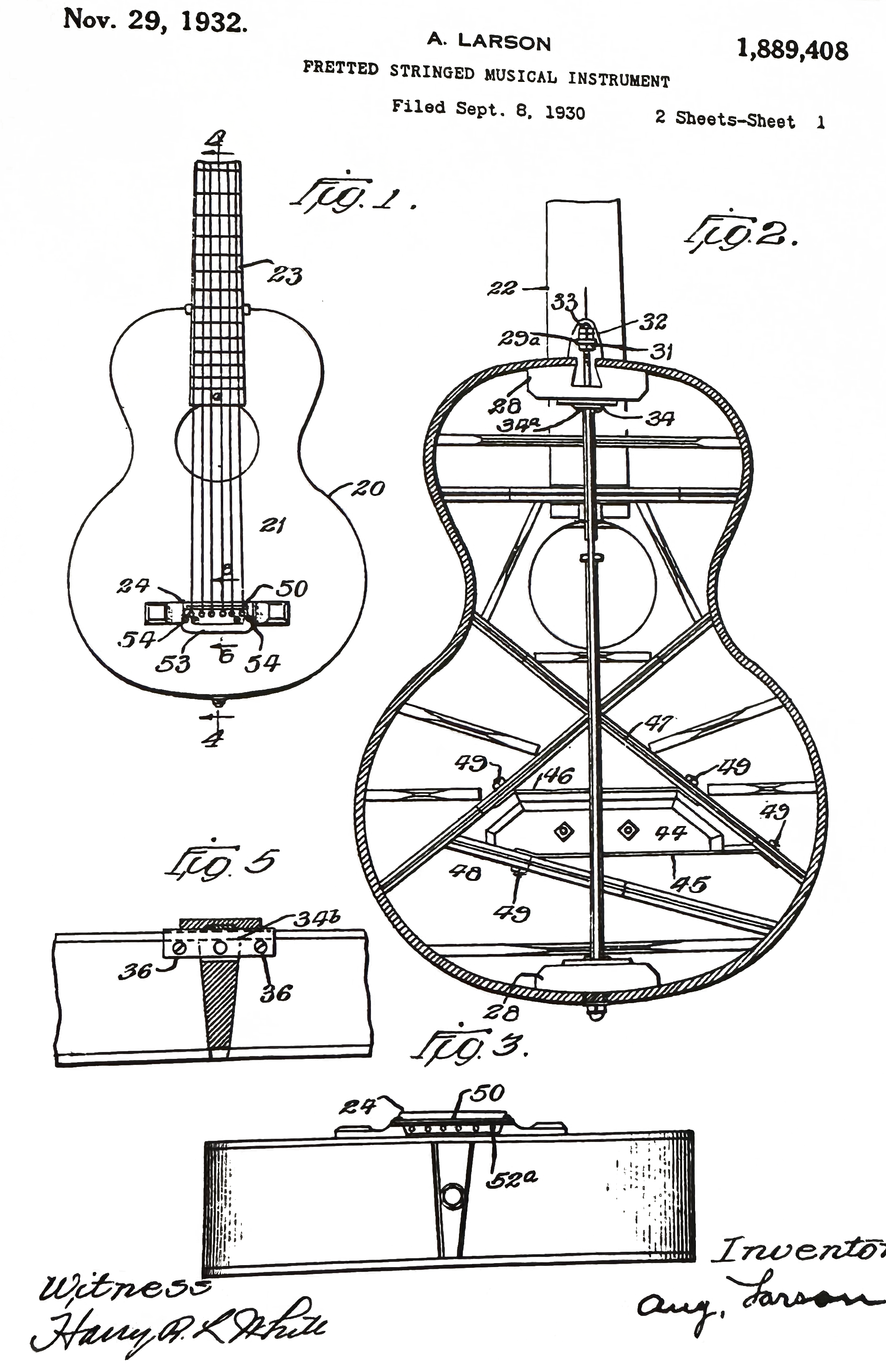
In 1904, August Larson secured a patent that looks almost boring at first glance: strips of wood glued together in layers, forming the guitar’s internal X-brace. If you have ever wondered why your modern steel string does not explode like a cheap deck chair when you tune it up, you have him to thank.
Traditional acoustic guitars were built for gut strings, which applied far less tension than the shiny new steel strings that were taking over American music at the time. Most makers simply swapped strings and hoped for the best. The Larsons decided hope was not a structural engineering plan, so they reinforced the X-brace, the criss-cross of wood supporting the soundboard, by laminating it.
Here is the trick: instead of just spruce, they sandwiched a strip of dense hardwood such as rosewood or ebony between two layers of spruce. That spruce–hardwood–spruce construction gave the braces far more strength without piling on unnecessary weight. The top could still vibrate freely, but it would not collapse under the strain of steel.
Why It Mattered
-
Structural stability. Their guitars could actually survive steel strings, making them playable for years rather than months.
-
Tone. The bracing not only supported the top but shaped the sound. Larson guitars are praised for their bright, focussed tone with a resonant bass. That quality comes straight from this laminated X-bracing idea.
-
Future proofing. This was decades before Martin and Gibson fully caught up. The Larsons were designing for a steel string future that the rest of the industry had not woken up to yet.
The Quiet Revolution
The irony is that the Larsons rarely even put their own names on these innovations. Their guitars were sold under brands such as Maurer, Stahl and Prairie State. While Martin and Gibson get showered with glory for “inventing” the modern steel string, the Larsons were already building them.
Legacy
Today, when luthiers talk about Larson guitars, this patent is often cited as the backbone, literally, of their lasting reputation. Modern builders still replicate laminated X-bracing when recreating Larson-inspired instruments. It is a classic case of engineering meeting artistry: invisible to the player, but vital to the sound.



